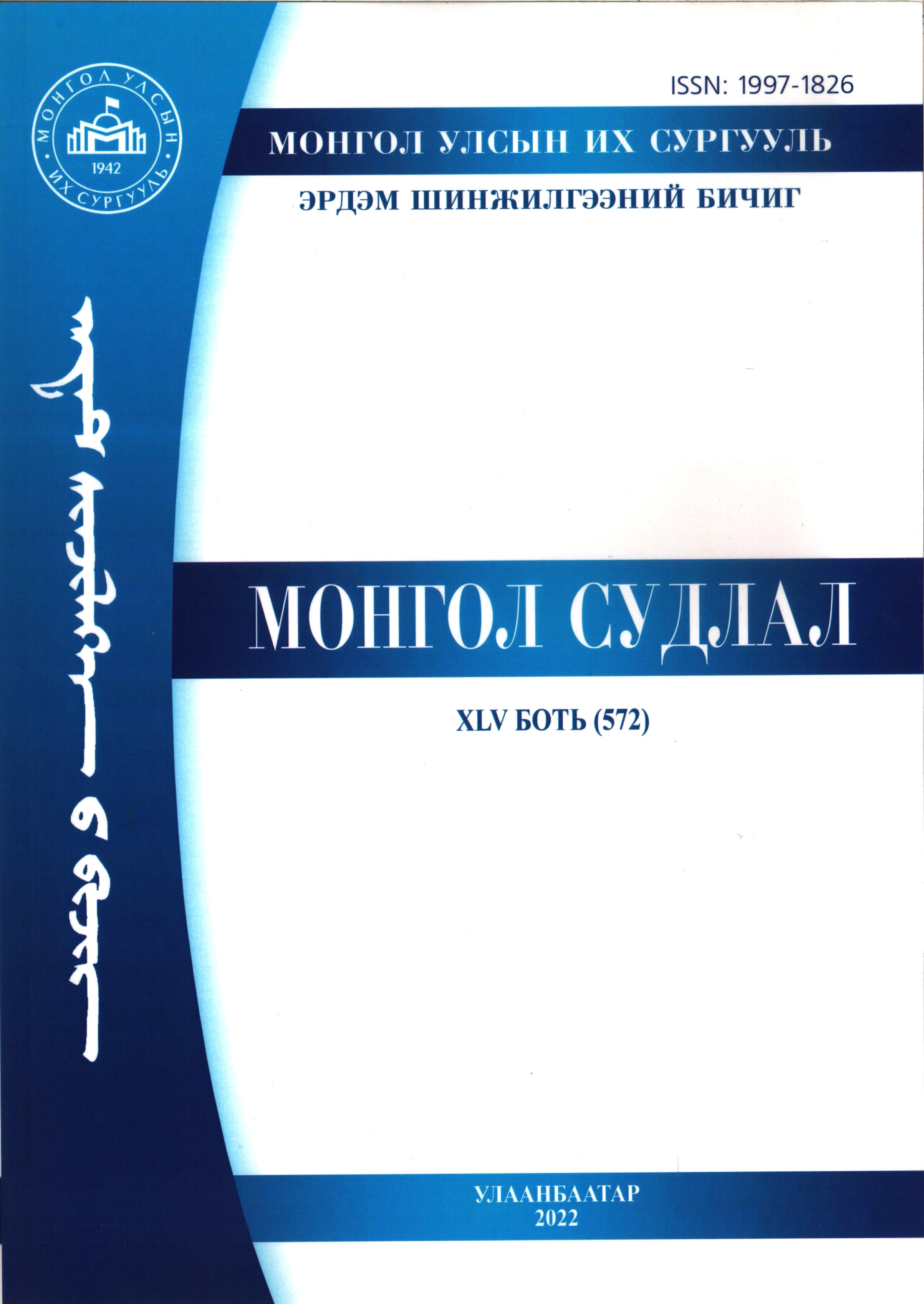Монгол шүлэгт ихэсгэл, багасгалын аргаар уран дүрслэл бүтээж ирсэн туршлага, зүй тогтол
Keywords:
монгол шүлэг, уран дүрслэл, ихэсгэл, багасгал, аман зохиол, Монголын Нууц Товчоо, Алтан товч, Д.Нацагдорж, Б.Явуухулан, Б.ЛхагвасүрэнAbstract
One of the many ways of employing figurative language in Mongolian poetry is the combination of the opposing literary devices of hyperbole and litotes. When used correctly, hyperbole and litotes enhance the meaning of a poem, deepening its semantic content and adding artistic features. In Mongolian oral folklore, hyperbole and litotes are increasingly used in symbolic expressions with extended meanings, words of praise, blessings, and benedictions, as well as in poetry involving communication in which the speakers each have the intention of prevailing over the other. In Mongolian epics, hyperbole and litotes are used at the classical level, appearing widely throughout works of medieval Mongolian literary works such as the Secret History of the Mongols and Luwsandanzan’s Altan Towch [Golden Summary]. However, hyperbole and litotes are comparatively less used in modern times due to the development of society and the mentality of readers placing more emphasis on tangible and documented phenomena. This article looks at hyperbole and litotes in the poems of D.Natsagdorj, B.Yawuukhulan, and B.Lkhagwasüren, examining how they have created unique imagery by means of exaggeration and understatement, and further illustrating the changes and innovations that have occurred in the development and evolution of figurative hyperbole and litotes.





